Business Intelligence In Healthcare: What People Don't Tell You
Contributed by Ndz Anthony - a 5X Certified BI Analyst and freelancer. He loves educating people through pieces of writing relating to business intelligence, SAP Analytics, and, enterprise reporting.
Not to toot my own horn but I am a BI analyst with over 3 years of experience in multiple industries and a handful of BI projects under my belt.
(smirks in triumph)...
And somehow at the time of writing this piece, I had never heard of the term ‘healthcare BI Analyst’.
I recently just figured that one is allowed to suffix the name of an industry to a generic job title to make it specialized.
Take, for example, hockey played on ice. Hockey played on Ice can be termed “hockey”(to Canadians maybe), but more specifically, to the rest of us, it’s “ICE hockey”.
In the same vein, BI analysts who function and specialize in the healthcare industry are called- you guessed it, healthcare BI /data analysts.
In this article, we want to explore the healthcare BI sector, discuss its characteristics and outline the top 10 BI software used in this industry.
Let’s dive in!
The State of Healthcare Business Intelligence
It’s a no-brainer that every patient’s episode of care within a healthcare organization can generate tons of information.
This information/data can take many different shapes, from numerical information to freeform written comments made by a medical expert, to pictures and photographs.
McKinsey & Company’s report on the expansion of big data in the healthcare industry had a few inferences to point out:
- With the rise of IoT and smart technology, many healthcare organizations around the globe have moved and are still moving from paper-based processes to electronic medical records. Therefore, the quantity and variety of electronic data used in the healthcare sector will most likely stay on the rise.
- Finding ways to tackle and make the most of our vast amount of healthcare data will require the right tech stack, tools, and data practices.
As far as the right data tools and practices go, business intelligence - the data-driven process of understanding a business sounds like a good place to start.
But don’t just take it from me.
According to Emergen Research, the global healthcare business intelligence (BI) market is expected to reach a market size of USD 15.14 billion in 2027.
This insinuates that healthcare organizations are already leveraging BI, and reaping its benefits.
So let’s pitch our tent here and explore this healthcare BI sector further!
Application of Business Intelligence in Healthcare
Some of the benefits of the application of business intelligence in healthcare are.
1. Improved decision-making
With the help of a centralized BI portal and a group of skilled healthcare BI analysts, healthcare organizations are able to derive great value from patient data and as a result, expedite the decision-making process on patient treatment.
2. Refined customer satisfaction
BI when used in collaboration with IoT, offers easy-to-access, real-time patient dashboards in a way that was never possible before.
Patients now get to feel involved with their healthcare and are able to trust and support the physician or practitioner.
This helps foster transparency as it relates to the client’s health status and as a result, positively affects your customer’s(patient’s) satisfaction.
3. Data management and quality
Unlike the traditional, manual method of collecting physical copies of data and inputting them into spreadsheets for analysis; (which most likely caused loss of data) BI presents the opportunity for customer/patient data to be saved in structured and unstructured formats, locally and/or in the cloud.
4. Predicting patient risks
Data-driven BI has been said to facilitate advancements like triage i.e (sorting and allocation of treatment based on the severity of one’s illness).
Healthcare companies who have been able to push the boundaries with BI and predictive analytics have been able to find the hidden relationships within their dataset and, forecast likely occurrences.
Digital Healthcare Analytics Stack
A tech stack is a list of all the technology services used to build and run an application - the various components that make up a specific ecosystem.
For a typical healthcare stack, this might include things like Electronic Health Records(EHR), Application Programming Interfaces (APIs) for ordering lab tests, data management, reporting software, and other components.
Here’s an illustration that depicts a typical digital healthcare stack.
If you're new to setting up an analytics stack, check out our free guidebook on building a scalable and easy-to-maintain modern data stack.
Core Features In Healthcare BI
If you are a data analyst or in the healthcare industry, after reading to this point you might be wondering - yeah yeah BI in healthcare is superb 🤔 but what are some of the most important features I should look out for when selecting a BI tool?
I marched on and did a bit of research on this and in this section, I’d like to share a few note-worthy attributes of a good healthcare BI tool.
(P/S: There is a pretty robust community for data teams in healthcare sector on dbt Slack - which is where I get most of the knowledge used in this article. Join it here)
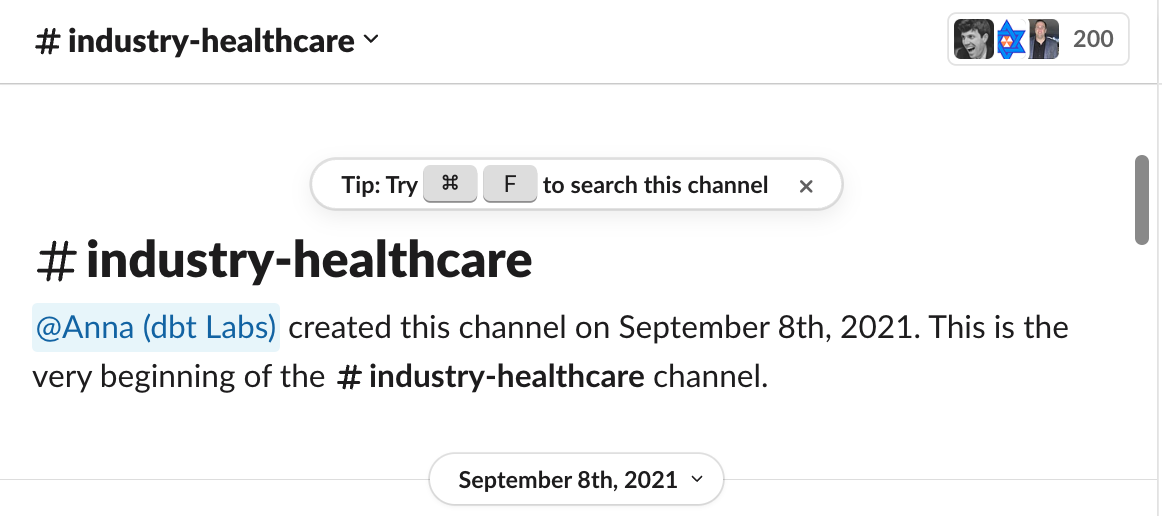
Let's get back to our core BI features.
Low-code/No-code
In one of our previous articles, we defined self-service as a business state. As true as this is, tools considered to be in the “self-service conversation” need to be at least low-code or friendly to the non-technical business user/persona.
Small and medium-sized healthcare may not have extensive IT employees for recruiting a wad of data engineering resources, and for larger ones, time = money is being underutilized.
Therefore it is important to use BI tools that have low/no-code functionalities. Features that let developers quickly build dashboards by relieving them of the need to code everything line by line.
Security
The preferred BI software should have the ability for the admin to manage the number of users that have access to the data stored. Using a cloud-based model can be a plus too - for remote accessibility and administration.
A good healthcare BI should also take security seriously and has necessary compliance certifications - like SOC2, GDPR or HIPAA to demonstrate how they can safeguard your data.
Mobile Access
In the present work environment where everyone is on the go, it is important that executives can always easily access information wherever they are, on a range of different devices such as mobile and tablets.
Data Visualization
I did a bit of psychology and neuroscience back in college and I know firsthand how intimidating medical data can seem. Without the right data charts, palettes, and visualization features, you might end up doing more harm than good with poor healthcare visuals.
If you’re going for a healthcare BI tool, ensure it’s one with robust data visualization features to cater to your data visualization needs.
Top 10 Best Business Intelligence Software for Healthcare
We’ve addressed the narrative of what to look out for in a good BI tool, in healthcare today.
Here are my top 10 picks.
01. Holistics
Holistics is a powerful self-service analytics platform providing a centralized data modeling approach for BI teams. With Holistics, data teams can create and govern a central definition of business metrics and data logic. Based on these predefined logics, business users can perform self-service data exploration, build their own reports, and get accurate analytics without repeatedly involving data analysts.
Dashboards and data logic can also be serialized into code and checked into Git version control repository for better maintenance and data governance.
Not just because I’m a writer here, Holistics actually provides a platform for non-technical users to build their own reports with simple, visual report builders.
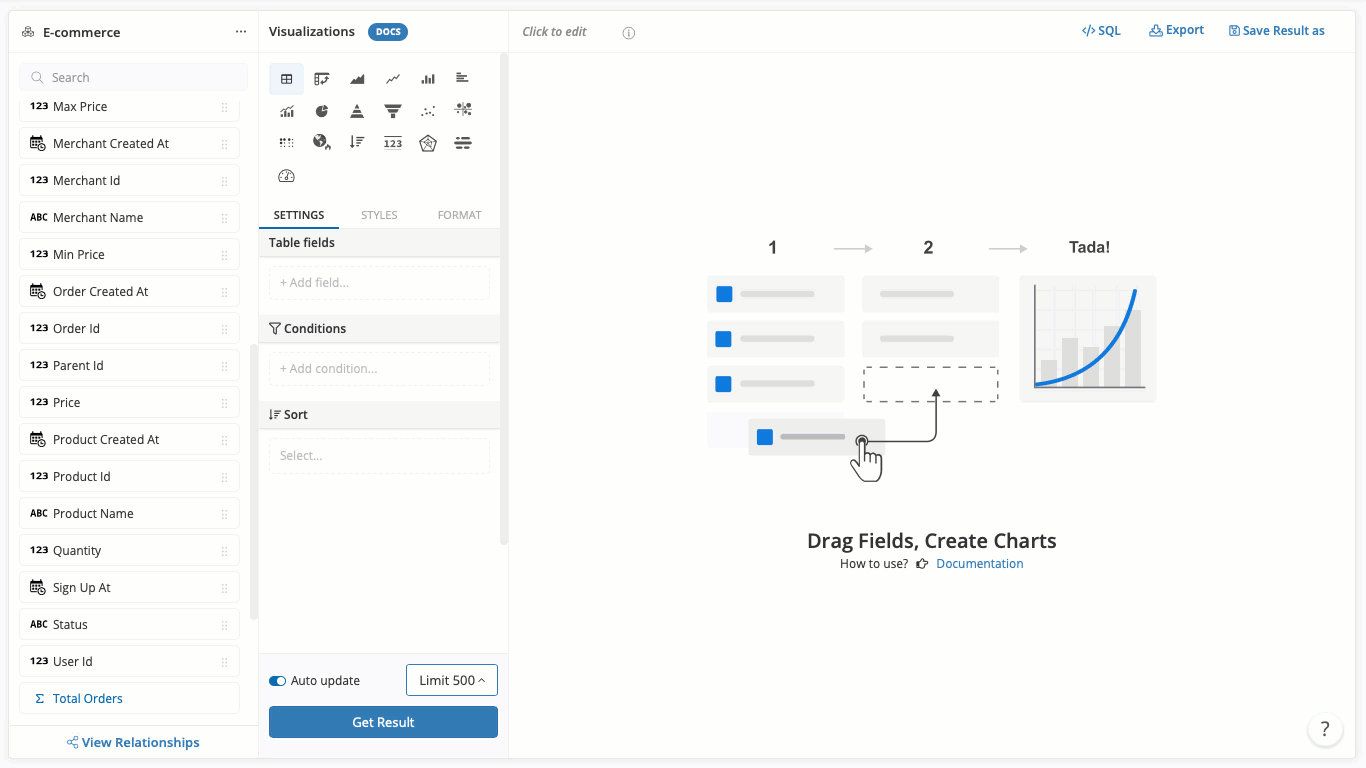
Some of our customers in the healthcare industry have reviewed us as their go-to Bi Software. Feel free to check out the case study on how Aurora health leveraged Holistics for better, actionable insights into their processes.
Holistics also take security and compliance seriously - as it is SOC 2 Type II compliant and GDPR compliant. One thing that you may find helpful is that Holistics does not need to store any user credentials (email, logins) of your application for it to work.
For more BI and analytics tools recommendation, check out:
02. Precision BI
Precision BI is a company that provides tailor-made BI tools for health care. Their products have a great affinity with healthcare standards and requirements such as HIPAA - even though they might not be as mature - functionality-wise - as other modern BI tools. It's hard to find a review about Precision BI online.
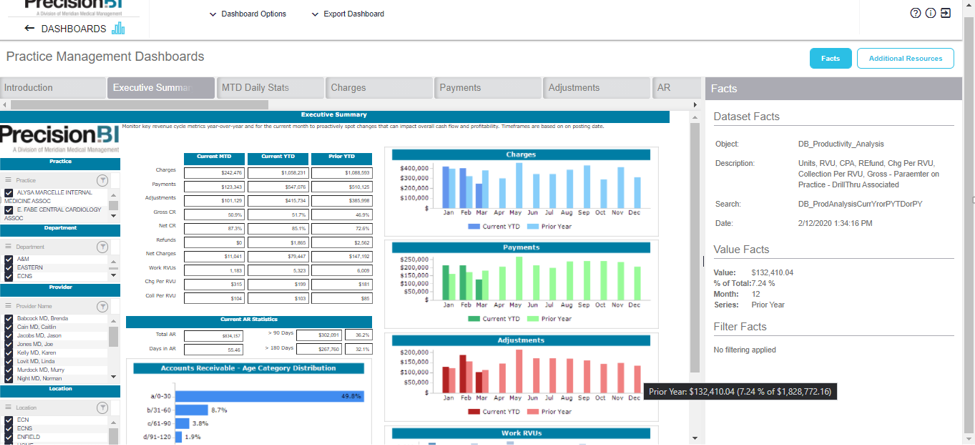
If you’re looking for a BI tool with a great affinity with healthcare standards, precision BI may be a good fit.
Healthcare companies such as Sansum clinic have deployed Precision BI for cross-application healthcare reporting and BI.
03. DHIS2
The District Health Information Software according to Wikipedia, is an open-source health information management system. At its core, it is a data warehousing platform for reporting, analysis, and dissemination of data for all health programs.
With over 60 native applications that push and pull data stored in the warehouse and its wide acceptance, it’s worth checking out.
04. Altair
Altair has a variety of data analytics/BI tools and offerings such as Big Data and Data Preparation. Their most recent offering “Altair One”, is a analytics tool for data mining and predictive analytics.
With Altair Data Analytics, healthcare users are able to speedily extract and transform data before analyzing it.
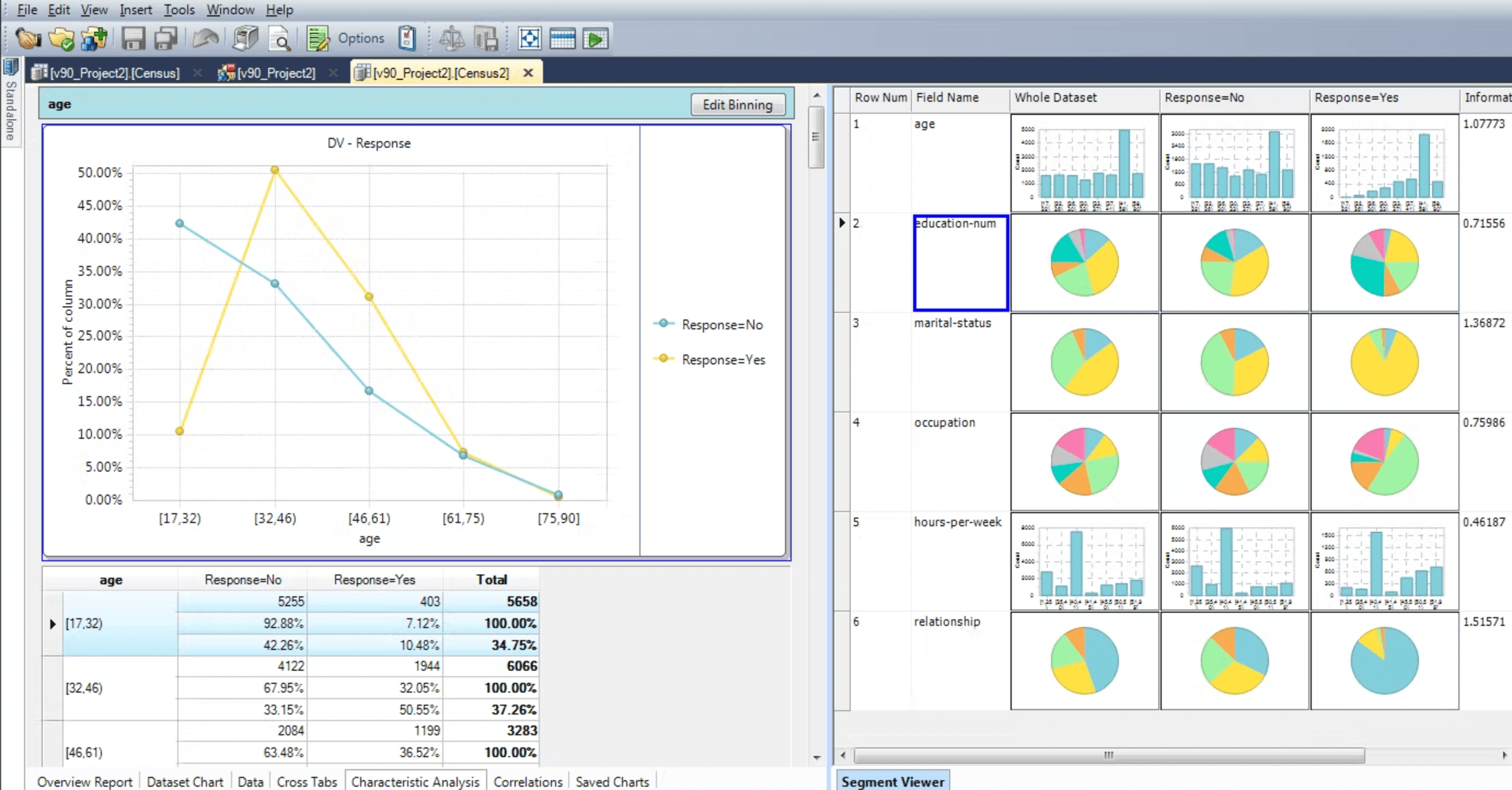
05. Alteryx
Alteryx is a self-service data analytics software company that specializes in data preparation and data blending.
Business and healthcare analysts find this tool particularly useful for connecting to and cleaning data from data warehouses, cloud applications, spreadsheets, and other sources within a single interface.
You can check out this use case where Alpha Maxx healthcare shows how it leverages Alteryx on its data to prevent premature birth.

06. Power BI
Power BI. Everyone’s somehow heard of Power BI. PBI is a business analytics solution that lets you visualize your data and share insights across your organization. It’s known for its added features like embed and mobile dashboard viewing
Healthcare companies like INTEGRIS Health make use of Power BI due to its flexibility of embedded reports and robust features for visual analytics.
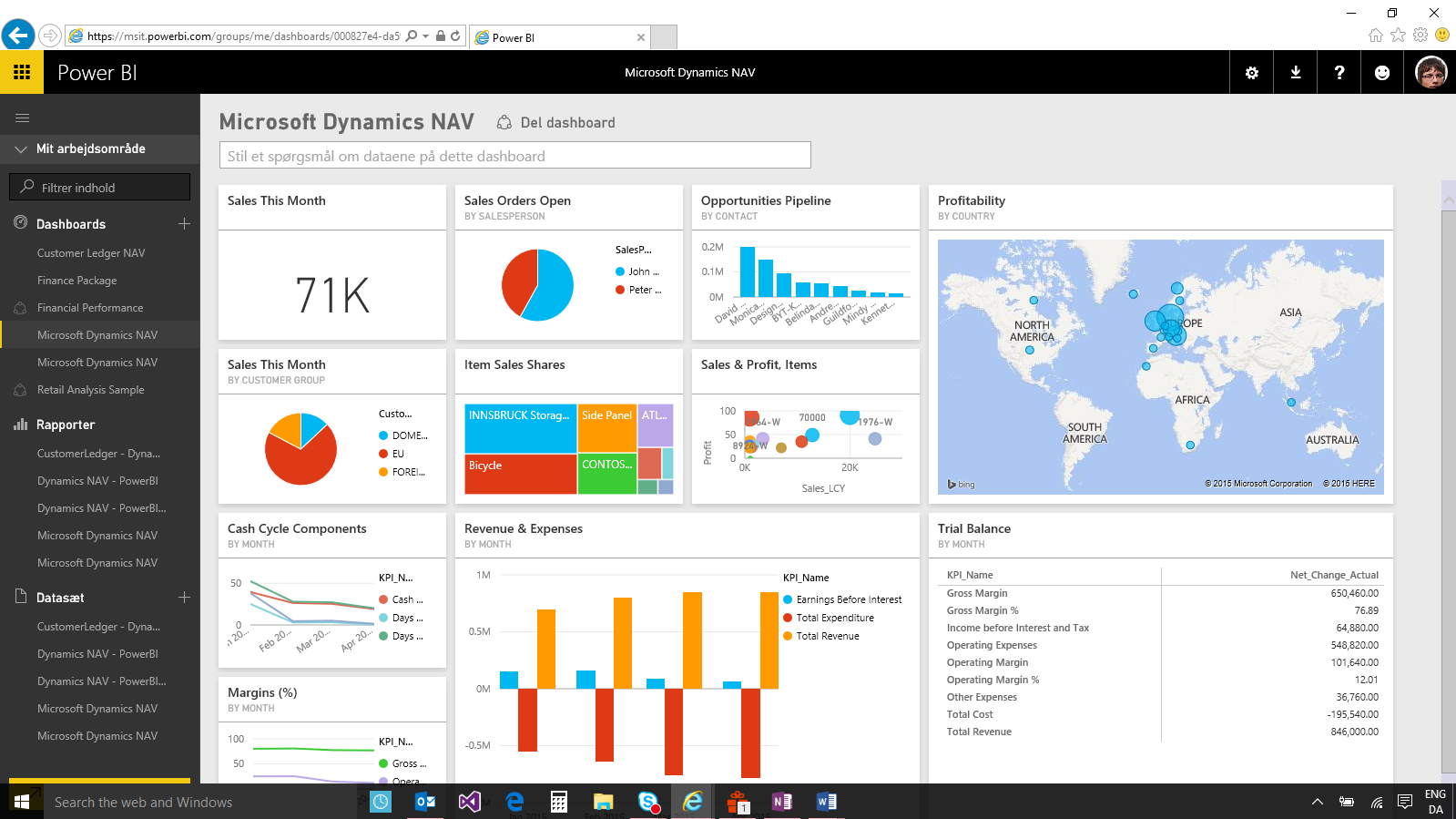
07. Tableau
Personally, when I hear Tableau, I think the “samurais of data viz”.
Tableau is a data explanatory tool that offers an expansive visual BI and analytics platform. The U-Health University of Utah shares its story of how Predictive analytics helped them optimize telehealth revenues and balance ICU capacity during the COVID-19 era.
If you’re struggling to find the right dashboards and charts to do your healthcare-related storytelling, you should definitely give Tableau a go.
08. Sisense
Sisense is a leading embedded analytics platform that goes beyond traditional business intelligence by providing organizations with the ability to infuse analytics everywhere, embedded in both customer and employee applications and workflows.
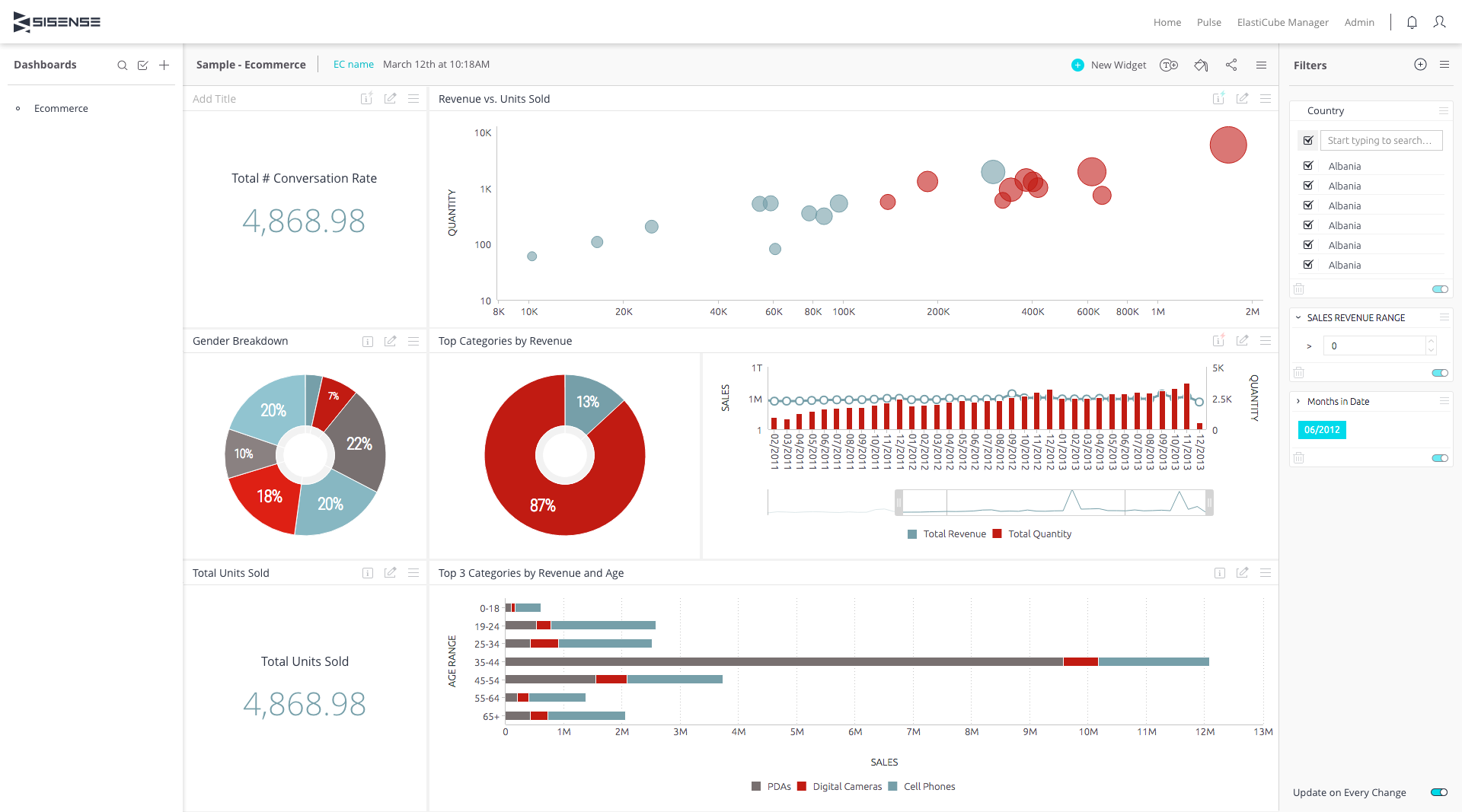
Sisense has empowered healthcare practitioners by democratizing data modeling and reporting.
Companies such as Gerimeda have partnered with Sisense to make innovative changes and improvements to patient health care and treatment delivery. See the case study here.
09. Domo
Domo is a business intelligence software comprised of multiple systems that can organize and visualize analytics metrics, Domo takes advantage of automatic updates for real-time metrics. One cool thing about Domo is how Its Interactive dashboards can be easily shared and explored by multiple users at the same time.
Healthcare companies like America medical have shared their customer success story on how using Domo helped them to increase patient-response time.
10. Qlik Sense
Qlik Sense is a BI tool with a focus on analyzing data in an explorative way. It does not use a query-based system like other BI software but instead uses its own associative analytics engine to navigate through the available data. If you’re looking for a healthcare system that supports AI and a large array of visualization options, then Qlik may be just right for you.
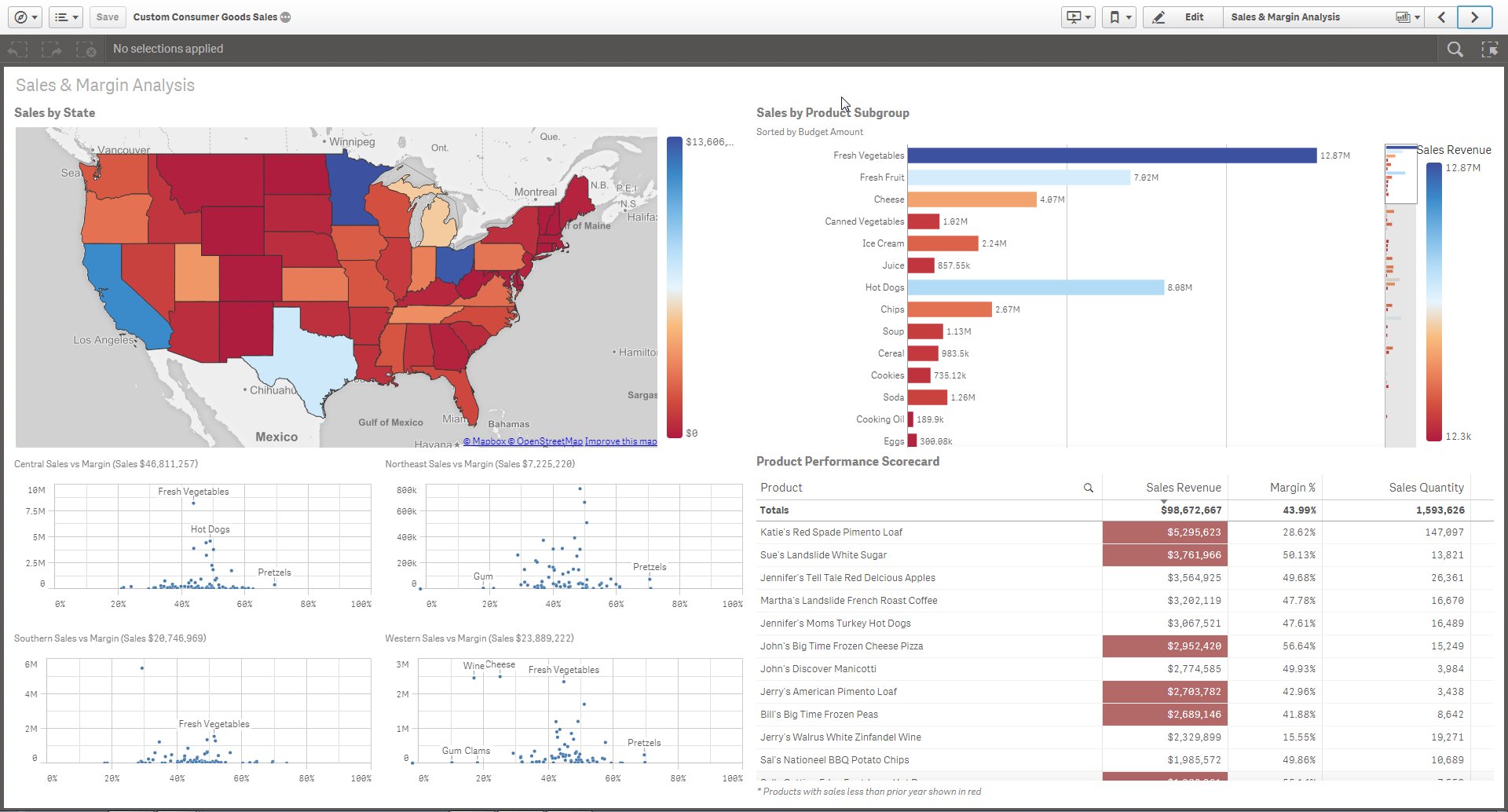
Wrapping Up
BI technology can help caregivers with the insights they need to increase rewards, and improve customer satisfaction, patient safety, visibility, and transparency in financial operations. With the help of BI tools, healthcare data management and quality will be more optimized.
Using the traditional method of stockpiling patient data is subtlely fading away and embracing BI for effectiveness and efficiency will enhance the relationship between healthcare workers and patients, in care delivery and service.
What's happening in the BI world?
Join 30k+ people to get insights from BI practitioners around the globe. In your inbox. Every week. Learn more
No spam, ever. We respect your email privacy. Unsubscribe anytime.
